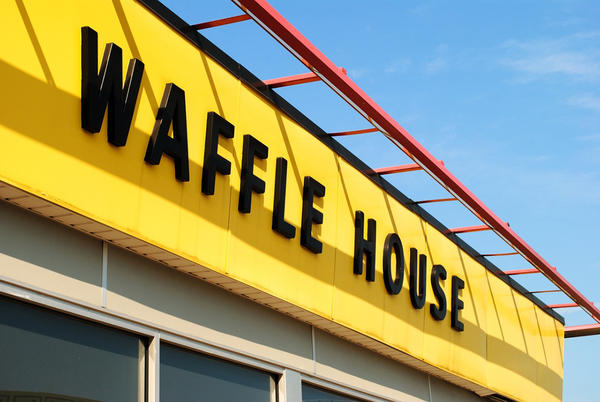WABE's Elly Yu interviews Dr. Julie Swann, Co-Director of the Center for Health & Humanitarian Systems and faculty at the GA Tech School of Industrial and Systems Engineering, about what has come to be called "the Waffle House Index." Read an excerpt below, and to read the whole article, clink on the link at the bottom of the page.
When a big storm or tornado devastates a community, the Federal Emergency Management Agency (FEMA) usually steps in to help state and local officials. But in recent years, FEMA has been getting some help of its own from an unexpected source – one you see on almost every highway throughout the Southeast: Waffle House.
The 24-hour restaurant chain prides itself on serving its customers at all hours of the day, seven days a week. And FEMA caught on to this. They discovered that if a Waffle House was closed after a storm, then that meant things were really bad.
“It just doesn’t happen where Waffle House is normally shut down,” said Philip Strouse, FEMA’s private sector liaison for the Southeast.
Strouse said Waffle Houses are able to bounce back relatively quickly after a natural disaster, and have a good sense of what their statuses are in a community.
“They’re sort of the canary in the coal mine if you will,” he said.
In 2011, the current head of FEMA, administrator Craig Fugate, was said to have coined what’s called the Waffle House Index. There are three measures in the index: green, yellow and red.
Green means the restaurant is open as usual, yellow means it’s on a limited menu, and red means the restaurant’s closed.
The index isn’t necessarily scientific, Strouse said, but it allows FEMA to know quickly about how things are on the ground.
“It gives us a pretty good feel right away when, of course, there’s the fog of trying to figure out what’s going on,” he said.
Because Waffle Houses restaurants are in areas prone to hurricanes and tornadoes, the company has made it part of their business plan to be prepared, said Pat Warner, the vice president of culture at Waffle House...
“From the standpoint of an engineer, the hurricane menu makes absolute sense,” said Julie Swann, associate professor of industrial and systems engineering at the Georgia Institute of Technology and co-director of the Center for Health and Humanitarian Systems.
She said she uses Waffle House as an example of how to use limited supplies for maximum benefit for other disaster management agencies.
“What we found in discussions with [Waffle House] is that they really considered responding to emergencies part of their core mission to meet the needs of customers,” Swann said.

